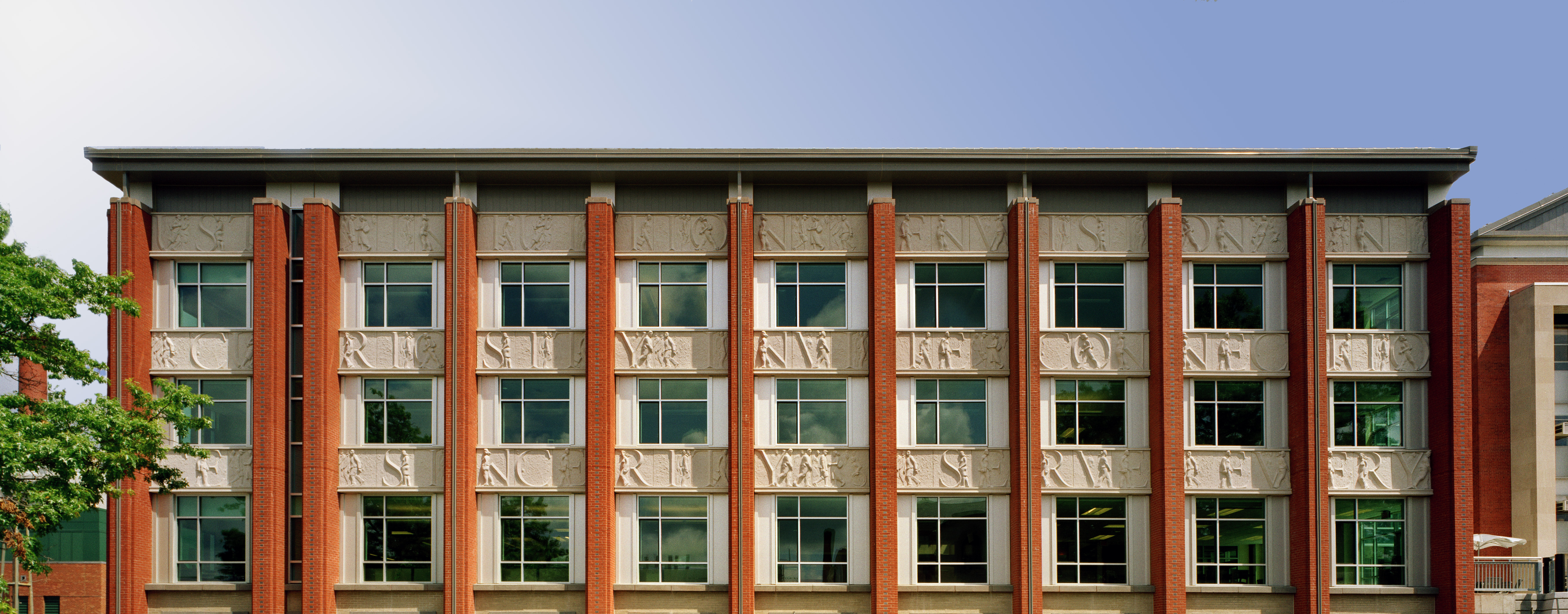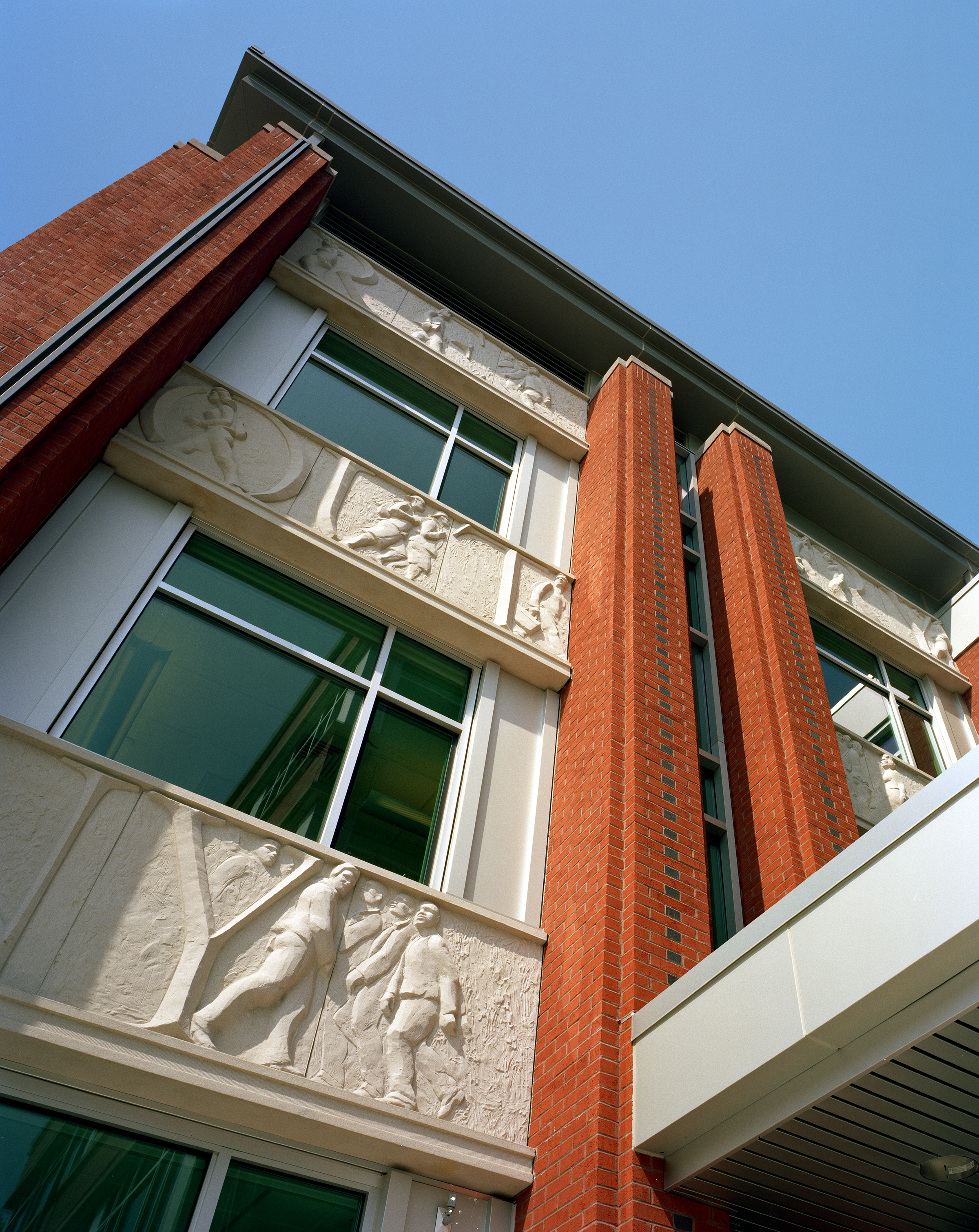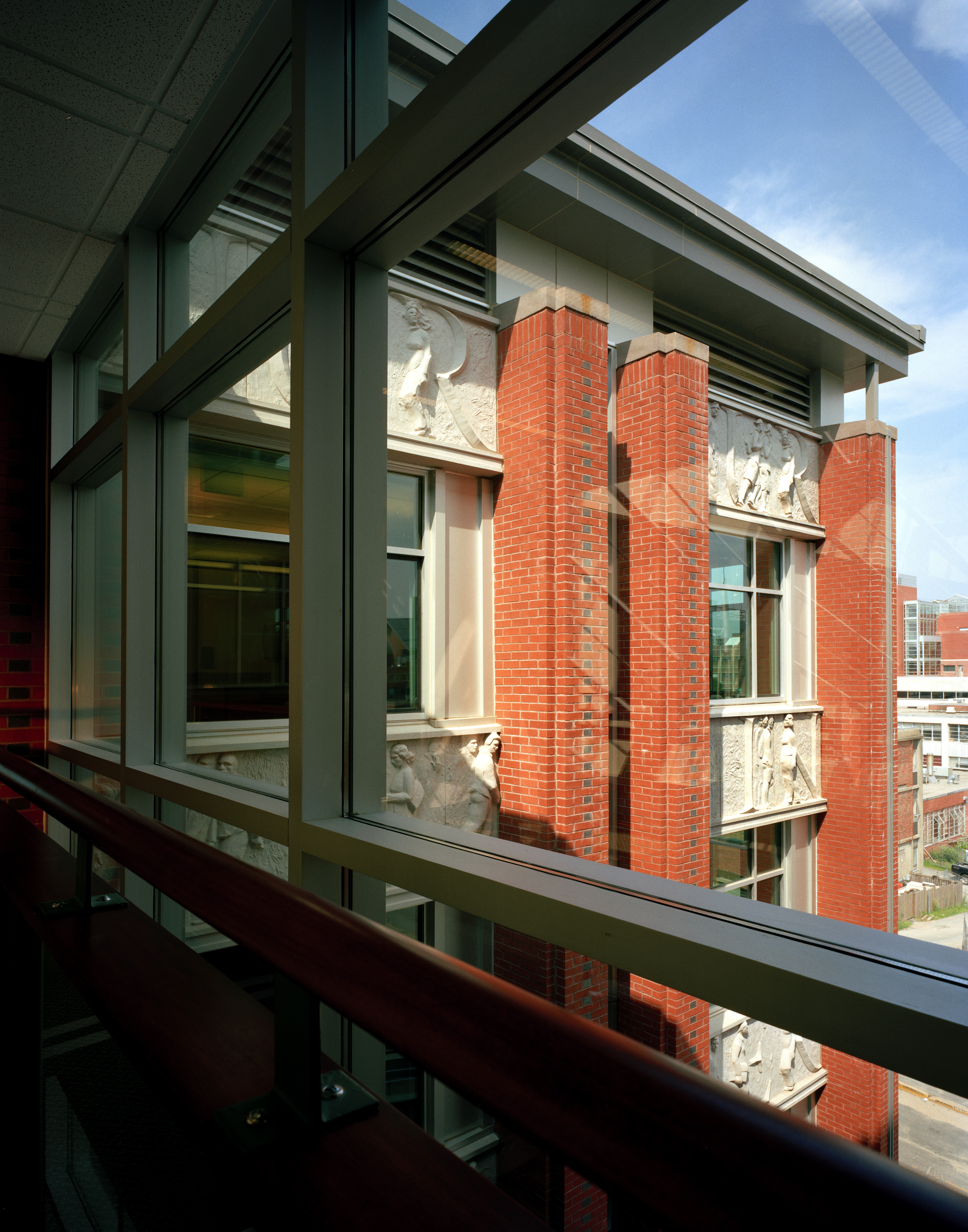The Walking Wall
Situated in the heart of the UConn Storrs campus, a single wall of figures and letters creates a connection between two facilities that share the common objective of encouraging learning and academic growth. The Neag School of Education and the Center for Undergraduate Education are two discreet academic programs, housed in mirroring buildings reflected across the central campus axis. Three stories of relief sculpture flow across a split facade moving east and west revealing the community of learners gathered at the University.
Like the students and teachers on the three floors inside the buildings, the figures on the wall move toward a better understanding, seeking intellectual illumination. They embark on a symbolic journey across the middle of the campus: some travel quickly, striding from building to building while other, more contemplative figures stand still and reflect on the transition. The figures grow dense in places, traveling or standing in groups, while other figures, depicted in low relief, begin to emerge from the wall of the building. These “ghost figures” evoke the developing minds or symbolize moments in the process of learning when confusion and clarity interact to create understanding.
The figures are interacting with large letters that drive the overall composition. The set of letters is comprised of the twelve unique letters of the name University of Connecticut. These twelve letters can be recombined to form thousands of words. Some are quirky and mundane, others inspirational or compelling. This word list has been distilled into noun/verb “exhortations,“ such as INCITE CURIOSITY, which relate directly to the processes of seeking, questioning, and learning.



Development of The Walking Wall began with studies of what the wall content could be. An interactive kiosk was built to involve the university community. A keyboard with the twelve unique letters was created to generate words for inclusion in The Walking Wall, presuming those words that received the highest number of entries would be included.
Ultimately, the kiosk database proved unsubstantial in terms of breadth and caliber of the words submitted so an alternative solution was sought. Generating the thousands of words possible via anagram generators, exam booklets were produced with the entire set of words.









During the construction at the site, the panel fabricators installed a test set of letters to determine how the material would weather. It was gratifying to see amidst all the piles of dirt and piping, and in between heavy machinery, was this three letter word visible to all who walked by — TRY.
